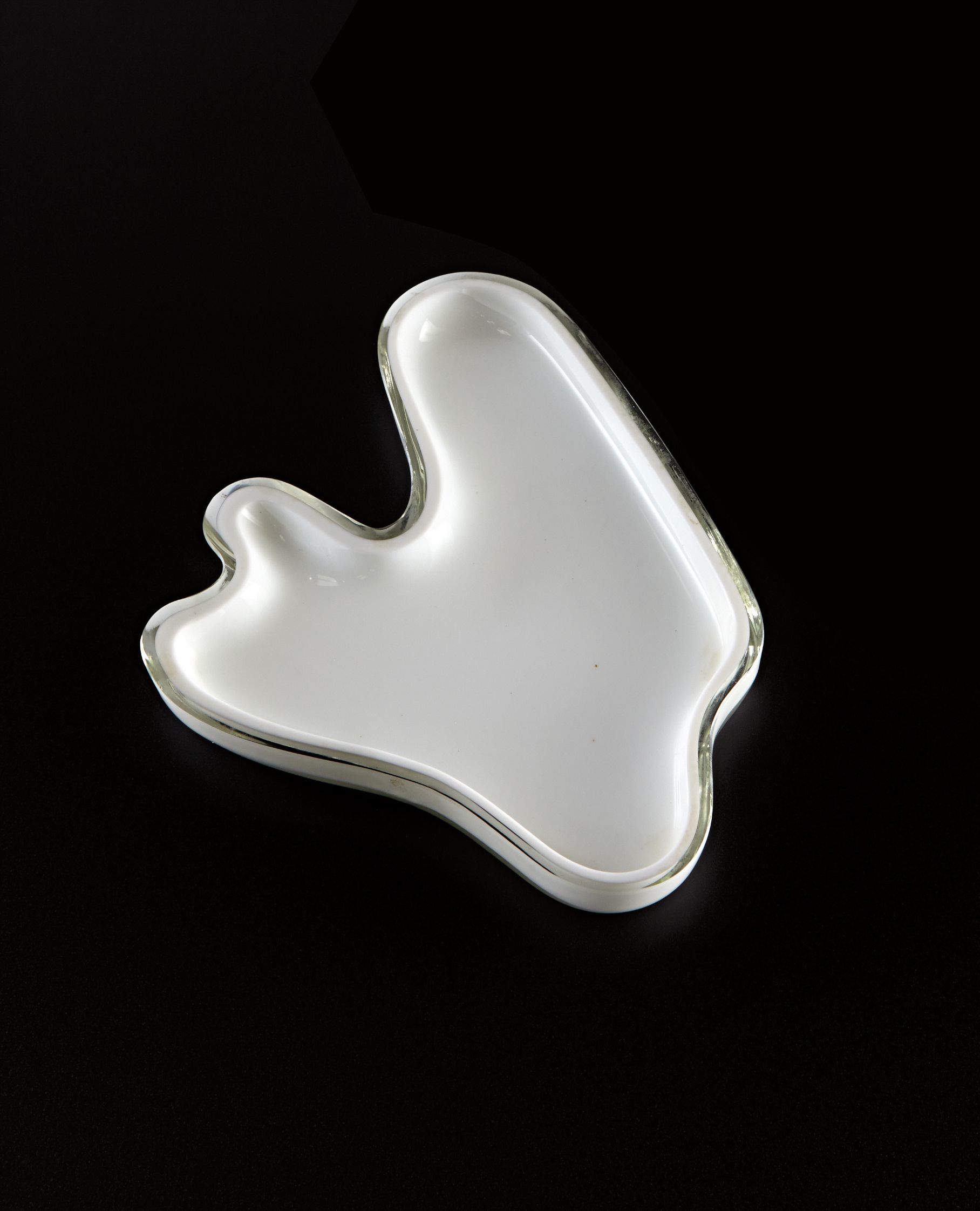

110
Alvar Aalto
Rare dish, model no. 9748-50, from the "Eskimoerindens skinnbuxa" series
Full-Cataloguing
Alvar Aalto’s Finnish Pavilion, known for its undulating and protruding walls, suggested the aurora borealis (northern lights) so prevalent in his native country. Mounted along the stepped walls of the interior were photographs promoting Finland’s resources and industrial prowess.
Aalto espoused his theory of the fair, when he said: "An exhibition should be what in the early days it used to be, a general store: in which all possible objects are grouped together in a dense display—whether it be fish, cloth or cheese. Therefore in this pavilion I have attempted to provide the densest possible concentration of display, a space filled with wares, next to and above and beneath each other, agricultural and industrial products often just a few inches apart. It was no easy work—composing the individual elements into one symphony."
Both model dishes are from the same sketch series “Eskimoerindens skinnbuxa” (The Eskimo Woman’s Leather Breaches), which won first prize in a 1936 design competition organized by Karjula-Iittala Glassworks, Finland. This series was also included in the Finnish Pavilion at the 1937 Exposition Internationale, Paris, and on the Karhula-Iittala Glassworks stand at the Finnish Housing Exhibition in 1939.
Alvar Aalto
Finnish | B. 1898 D. 1976In contrast with the functionalism of the International Style (as well the neoclassicism put forward by the Nazi and Soviet regimes), Alvar Aalto brought a refreshing breath of humanism to modern design: "True architecture exists only where man stands in the center," he wrote. Aalto designed furniture in stack-laminated plywood composed of Finnish birch, which was cost-effective and lent warmth to his interiors. Aalto also revived Finnish glass design with his entries in the various Karhula-Iitala glassworks competitions throughout the 1930s.
In 1936 he won first place for a collection of colorful, wavy vases in various sizes titled Eskimoerindens skinnbuxa (The Eskimo Woman’s Leather Breeches). The vases were an immediate success and the most popular size, now known as the "Savoy" vase, is still in production today. Aalto's freeform designs, in harmony with human needs and nature, anticipated the organic modernism of the 1950s and 1960s; in particular, his innovations in bent plywood had a major impact on designers such as Charles and Ray Eames.